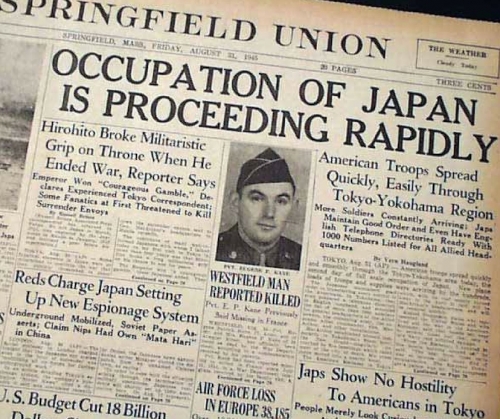“Some enemy cities were too disease-ridden and filthy for immediate occupation. Navy doctors revealed that dysentery, typhoid fever, typhus, diphtheria and tuberculosis ran unchecked in two towns. In another area, 40 percent of the Japanese men examined suffered from trachoma. Despite these problems, the occupation moved ahead smoothly. If the Japs continued to cooperate, said Lt. General Robert L. Eichelberger, Eighth Army commander, the occupation force might be home in a year.”
KEY WORDS: Japanese acceptance of 1945 occupation forces,illnesses in 1945 japan,friendly japanese citizens and american army of occupation 1945,







































